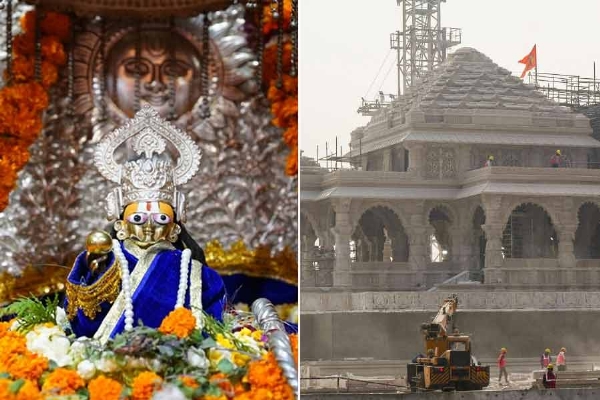Sun-powered tilak for Ram Lalla idol in Ayodhya
11 Jan 2024 12:01:48
Scientists at Roorkee's Central Building Research Institute (CBRI) have crafted a unique system for the newly constructed Ram temple in Ayodhya. The system ensures the appearance of a 'tilak' on the forehead of the idol in the sanctum sanctorum using sunlight, mirrors, and lenses.The display is scheduled for Ram Navami on March 29, marking Lord Ram's birth anniversary according to the Hindu lunar calendar.

This inventive system, which requires neither electricity nor batteries, is constructed entirely from brass. It’s a testimony to the converging paths of art, science and faith, transforming the temple’s third floor into a space where celestial mechanics and religious devotion meet.
The system ensures the appearance of a circular ‘tilak’, measuring 75 mm on the forehead of the idol in the sanctum sanctorum using sunlight, mirrors and lenses.
The system’s chief scientist and principal investigator, Saroj Kumar Panigrahi, has detailed the complex arrangement of high-quality mirrors and lenses engineered to redirect sunlight onto the idol’s forehead for at least four minutes at 12.04 noon each Ram Navami. However, there would be no ‘Sun Tilak’ if the weather is cloudy, he clarified.
|| Sun-powered tilak for Ram Lalla Murti in Ayodhya ||
— Ved Science & Maths (@jai_rry) January 10, 2024
Scientists at Roorkee's Central Building Research Institute (CBRI) have crafted a unique system for the newly constructed Ram temple in Ayodhya.
Thread 1/4 pic.twitter.com/YGhiPj8Wjl
“We constructed it entirely from brass instead of iron or steel. Though direct sun never falls on temple sanctum sanctorum, we have evolved the mechanism to directly focus the sun as the ‘tilak’ on the idol of Ram Lalla on each Ram Navami, a date that aligns with Lord Ram’s birth anniversary,” said Saroj, a native of Paralakhemundi who has completed B Tech from Burla and M Tech from REC Rourkela after completing his school studies in Maharaja’s Boys High School, Paralakhemundi in 1987 and Plus Two Science in SKCG College, Paralakhemundi.
Indian Institute of Astrophysics, Bengaluru and Bengaluru-based Optics & Allied Engineering Private Limited participated in the process to blueprint the plan of ‘Sun Tilak’. These two institutes handled the fabrication of mirrors, lenses and tilt mechanism for the temple at no cost though the cost would be around Rs 80 lakh to Rs 90 lakh. The Indian Institute of Astrophysics gave consultancy to CBRI for the optical design.
The system is manually operated, reflecting a harmonious blend of human touch and scientific precision and is scheduled to be installed on the temple’s third floor, said Saroj, who is heading a team of four scientists. Detailed calculations show that the English calendar date of Ram Navami repeats every 19 years. “With this, we have developed this mechanism,” said Saroj.
The optomechanical system, set to be installed on the temple’s third floor, incorporates high-quality mirrors (M1 and M2), a lens (L1) and vertical piping with lenses (L2 and L3) fixed at specific angles. Ground floor components include mirrors (M3 & M4) and a lens (L4). Saroj explained the process, “Sunlight falls on M1, travels through L1, M2, L1, L2, M3 (installed outside the garbha-griha), and finally on M4, bringing a ‘tilak’ on the forehead of the idol.”
The CBRI team, headed by Saroj Kumar Panigrahi, comprises R S Bisht, Devdutta Ghosh, V Chakradhar, Kanti Lal Solanki (scientists), Sameer and Dinesh (technical staff) who developed the mechanism to adapt to the changing position of the Sun on Ram Navami.